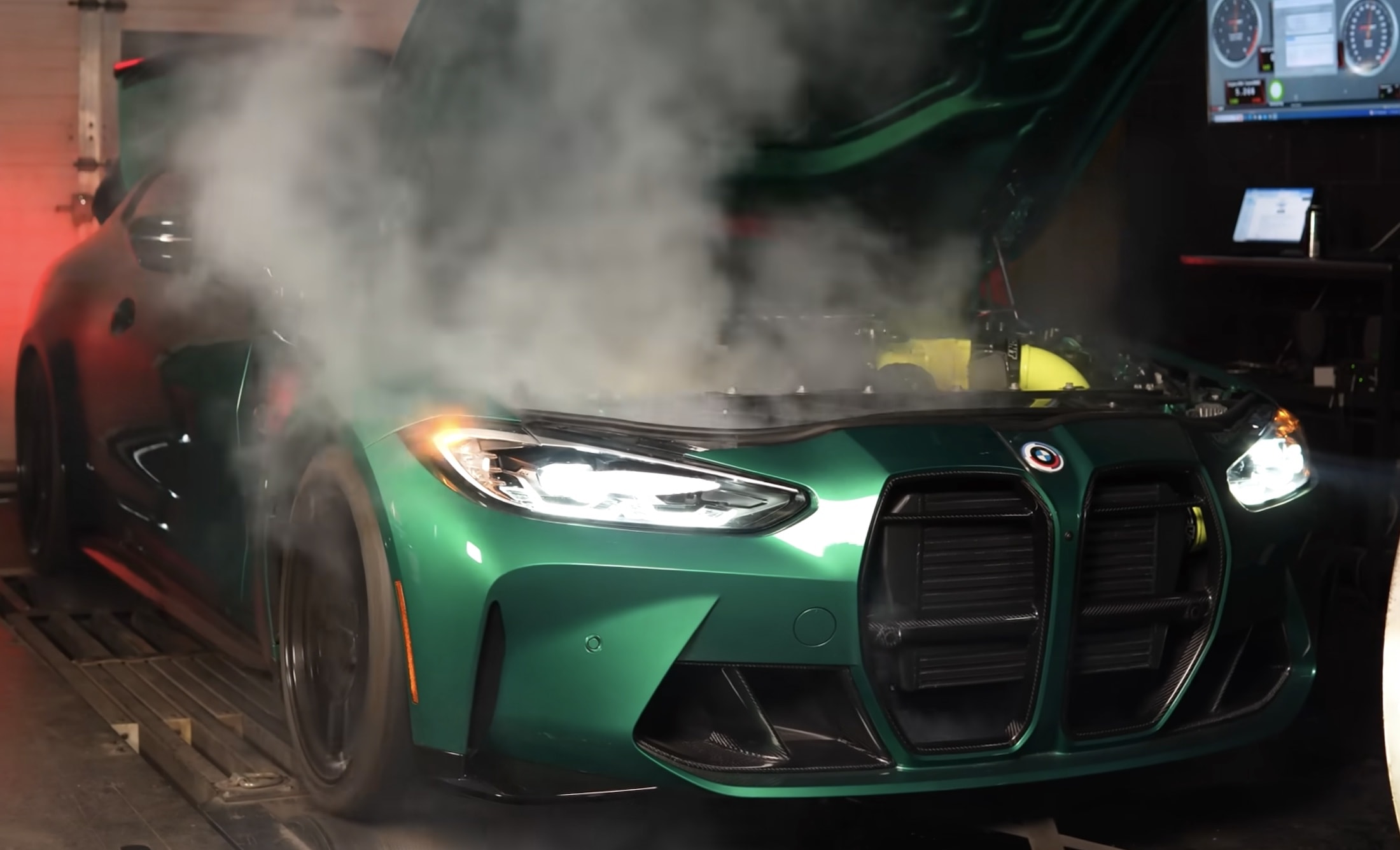Chaos erupted when the BMW M4 exploded on the dyno. Fragments of the car scattered in all directions. Despite the dramatic setback, the team immediately shifted their focus to the race against time. With only 48 hours remaining before the BMW was scheduled to hit the drag strip, there was no time to dwell on the mishap.
The team had possessed the M4 since the previous year. Renowned as both a sports car and a muse for tuners, the BMW M4, controversial grille notwithstanding, boasted a 3.0-liter inline-six engine from BMW, generating 473 horsepower (480 metric horsepower) and 406 pound-feet (550 Newton-meters) of torque upon leaving the production line.

However, these figures fell short of Maximum PSI’s ambitions. Given the team’s moniker, this pursuit was unsurprising. Acquiring the BMW M4 in the preceding summer, they started on a relentless quest to achieve 1,200-wheel horsepower.
Yet, their thirst for power remained unquenched. In January, they started on a series of modifications, including installing a brand-new intercooler setup, a different intake manifold, and incorporating a nitrous system to extract additional power from the 3.0-liter engine. Every driveline component received an upgrade, culminating in a Stage 3 transmission.
However, the untested car encountered issues at the drag strip, resulting in a disappointing outcome for the team. Nevertheless, undeterred by this setback, they vowed to return stronger, determined to claim the top spot in future track days.

